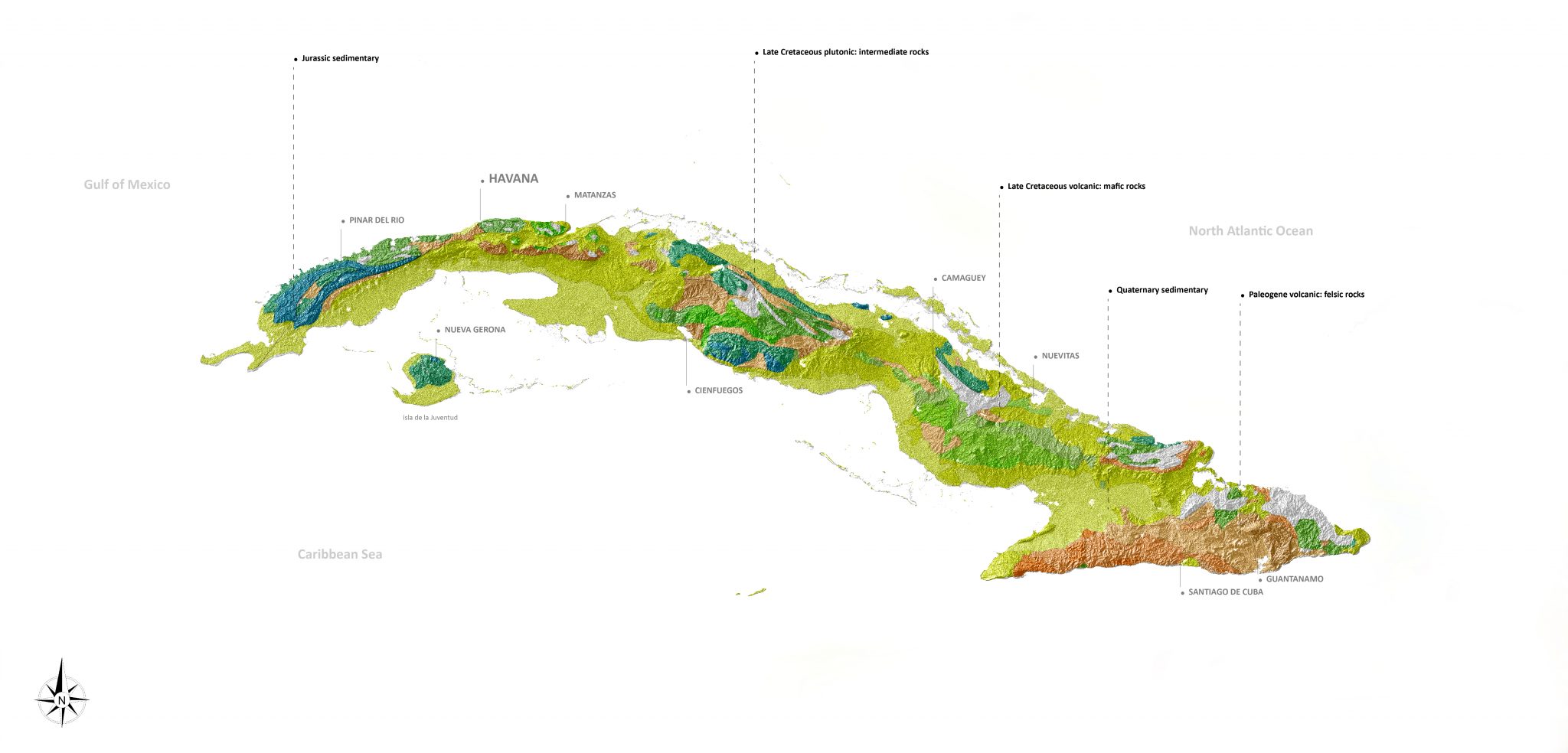

Cuban arc sequences include island-arc tholeiitic, calcalkaline, and alkaline bimodal suites of volcanic and plutonic rocks.

A new arc developed in eastern Cuba during Paleocene–middle Eocene times. Arc activity in the Cuban segment of the Greater Antilles produced sedimentary, volcanic, and plutonic rocks during Cretaceous times (ca. Fragments of the intervening oceanic lithosphere (Proto-Caribbean, connected to the Central Atlantic) and fore- and back-arc oceanic lithosphere (Caribbean, of Pacific origin) occur as tectonic fragments detached from the ophiolitic units, including serpentinized harzburgites and dunites, banded and isotropic gabbros, basalts (tholeiitic and fore-arc basalts, locally with boninites) and Late Jurassic (Tithonian) through Late Cretaceous (Coniacian and younger) oceanic sediments.

Passive margin deposition ceased in latest Cretaceous time, when increasing relief of accreted (overriding) oceanic arc and ophiolite complexes shed coarse sediments (olistostrome and flysch), followed by carbonate deposition. Thick sequences of Jurassic-Cretaceous strata (conglomerates, sandstones, limestones, dolostones, shales) and interlayered basaltic rocks characterize passive margin sequences preserved in the Guaniguanico terrane (western Cuba, related to the Mayan passive margin and the Gulf of Mexico) and the Bahamas Platform borderlands (north of Cuba). Cuba is the largest island in the Greater Antilles, and its geology records three important episodes: (1) the Jurassic breakup of North and South America (Pangea) and associated passive margin and oceanic sedimentary and magmatic evolution (2) the sedimentary, magmatic, and metamorphic evolution of an intra-oceanic Cretaceous-Paleogene ophiolite-arc complex and (3) the Paleogene “soft collision” and transfer of the NW Caribbean plate (and Cuba) to the North American plate.


 0 kommentar(er)
0 kommentar(er)
